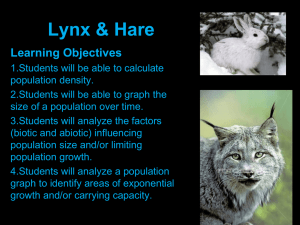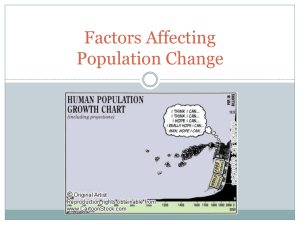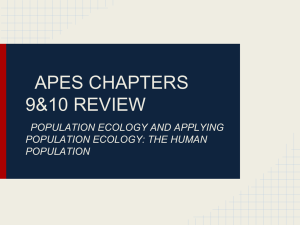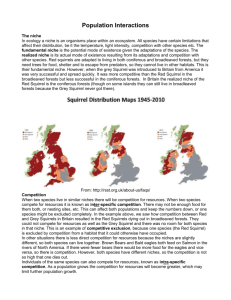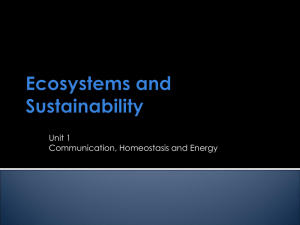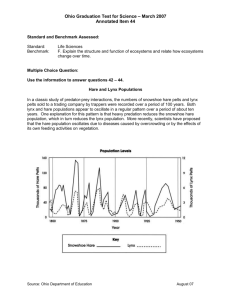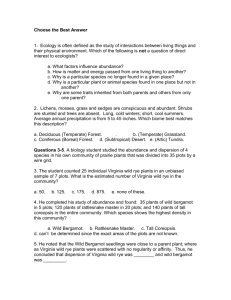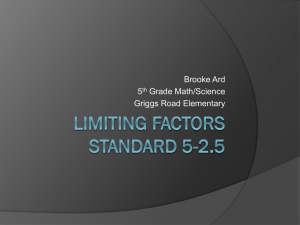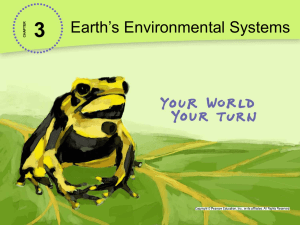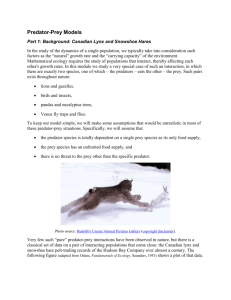Predator-Prey Relationships: Lynx & Hare Worksheet
advertisement
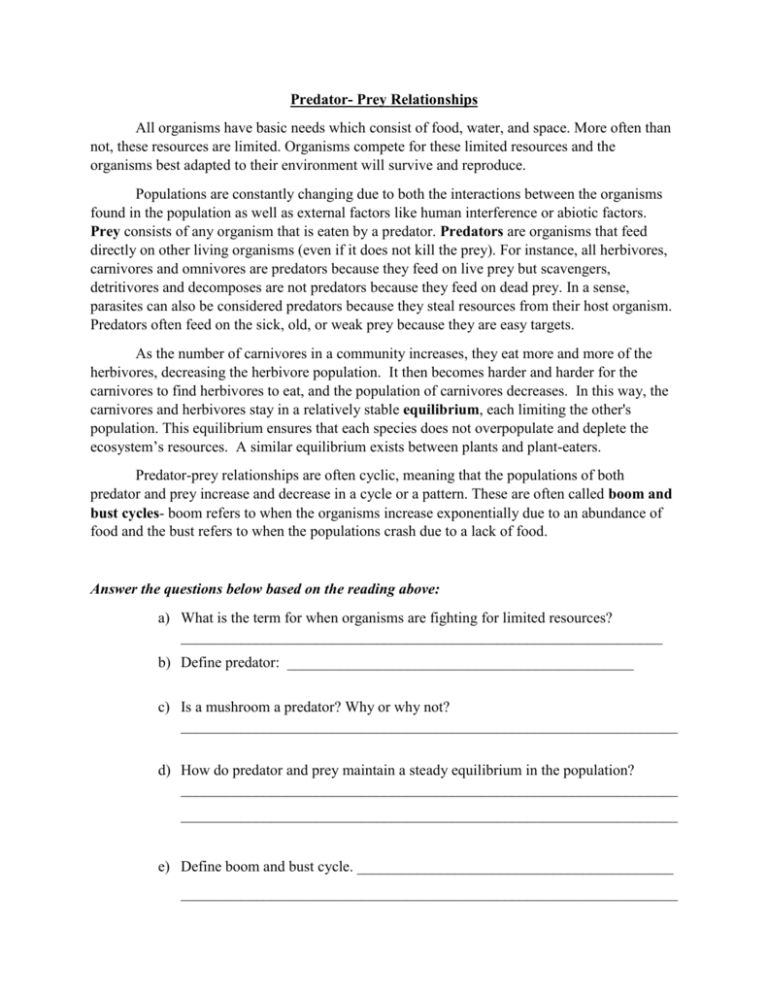
Predator- Prey Relationships All organisms have basic needs which consist of food, water, and space. More often than not, these resources are limited. Organisms compete for these limited resources and the organisms best adapted to their environment will survive and reproduce. Populations are constantly changing due to both the interactions between the organisms found in the population as well as external factors like human interference or abiotic factors. Prey consists of any organism that is eaten by a predator. Predators are organisms that feed directly on other living organisms (even if it does not kill the prey). For instance, all herbivores, carnivores and omnivores are predators because they feed on live prey but scavengers, detritivores and decomposes are not predators because they feed on dead prey. In a sense, parasites can also be considered predators because they steal resources from their host organism. Predators often feed on the sick, old, or weak prey because they are easy targets. As the number of carnivores in a community increases, they eat more and more of the herbivores, decreasing the herbivore population. It then becomes harder and harder for the carnivores to find herbivores to eat, and the population of carnivores decreases. In this way, the carnivores and herbivores stay in a relatively stable equilibrium, each limiting the other's population. This equilibrium ensures that each species does not overpopulate and deplete the ecosystem’s resources. A similar equilibrium exists between plants and plant-eaters. Predator-prey relationships are often cyclic, meaning that the populations of both predator and prey increase and decrease in a cycle or a pattern. These are often called boom and bust cycles- boom refers to when the organisms increase exponentially due to an abundance of food and the bust refers to when the populations crash due to a lack of food. Answer the questions below based on the reading above: a) What is the term for when organisms are fighting for limited resources? ________________________________________________________________ b) Define predator: ______________________________________________ c) Is a mushroom a predator? Why or why not? __________________________________________________________________ d) How do predator and prey maintain a steady equilibrium in the population? __________________________________________________________________ __________________________________________________________________ e) Define boom and bust cycle. __________________________________________ __________________________________________________________________ The Lynx & the Hare The Canada lynx and its primary prey, the snowshoe hare, are a classic example of the fluctuation of predator prey populations. The lynx has other food sources besides the hare but they are not as abundant as the hare and will not sustain a large lynx population. Hares eat grass and seeds to survive the cold Canada climate. Scientists have collected data over many years on the two populations have created the graph below. Use the graph above to answer the following questions: 1. What patterns do you notice when comparing the hare and the lynx populations ? (describe the shape of the graph.) _____________________________________________________________________ _____________________________________________________________________ 2. Around 1865, why was the hare population so high? Explain. _____________________________________________________________________ _____________________________________________________________________ 3. What made the hare population decrease right before 1865? Explain. _____________________________________________________________________ _____________________________________________________________________ 4. Are there usually more lynx or more hares? Why is this? (Consider energy pyramids). _____________________________________________________________________ _____________________________________________________________________ 5. When the hare populations increases, what happens to the lynx population? Why? _____________________________________________________________________ _____________________________________________________________________ 6. When the hare populations decrease, what happens to the lynx population? Why? _____________________________________________________________________ _____________________________________________________________________ _____________________________________________________________________ 7. What other factors in the ecosystem could affect the hare and lynx populations? _____________________________________________________________________ _____________________________________________________________________ _____________________________________________________________________ 8. What would happen to the hare population if all/most of the lynxes were hunted and killed by trappers for their fur? _____________________________________________________________________ _____________________________________________________________________ 9. How would this change in #9 affect the rest of the ecosystem over time? _____________________________________________________________________ _____________________________________________________________________ 10. Scientists say that a good predator-prey relationship keeps the population in balance/equilibrium. Explain how the lynx and hare model displays this concept. _____________________________________________________________________ _____________________________________________________________________ _____________________________________________________________________
